The Teatro di San Carlo in Naples, which served as a royal theatre for both Bourbon and Savoy kings, is a UNESCO World Heritage Site. You can attend a show to experience the magic of Naples’ historic opera house. However, you may want to discover this iconic cultural venue’s hidden secrets and rich history. In that case, I recommend taking a guided tour. This way, you can see what I wrote about in this post with your own eyes.
Table of Contents
San Carlo Theatre in Naples: what’s on
The San Carlo Theatre in Naples is one of Italy’s top opera houses with a regular dance and performance calendar. It is also a UNESCO World Heritage Site. It is one of the most important monuments of the Neapolitan capital.
ORGANISE YOUR TRIP TO NAPLES
Save money on your trip to Naples with the Naples Pass and enjoy access to popular attractions like the underground city tour and the Catacombs of San Gennaro, along with unlimited public transport.
Stay connected throughout Italy by getting an Airalo eSim online for reliable data and phone coverage. Don’t forget to secure your Heymondo travel insurance for peace of mind and be covered for any surprises on your adventure!
King Charles of Bourbon commissioned the theatre in 1737, making it one of the oldest and most prestigious theatres in Europe still operating. Its history is intertwined with the Kingdom of Italy and opera. Many famous musicians, including Gioacchino Rossini and Gaetano Donizetti, have directed it.
The San Carlo Theatre, with its horseshoe shape, five tiers of boxes, a royal box, broad stalls, and a thirty-meter stage, was a model for later-built theatres in Europe, such as the Teatro alla Scala in Milan and the Teatro di Corte at the Reggia di Caserta.
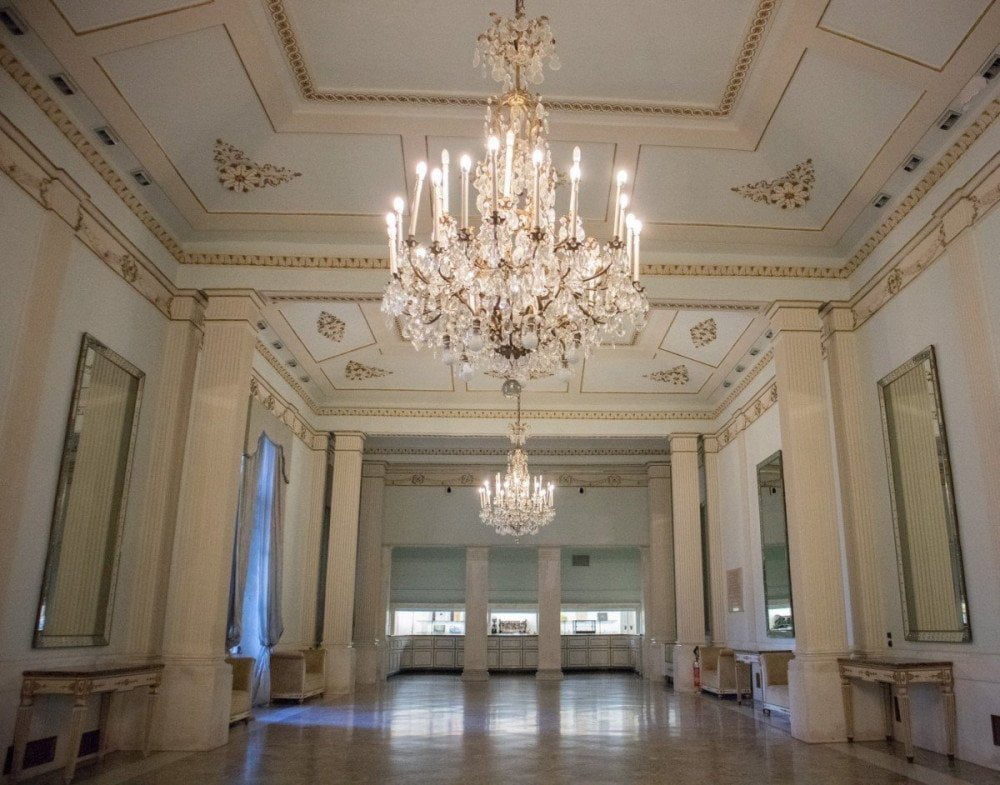
Why visit the San Carlo Theatre in Naples with a guided tour
Attending a theatre performance is a magical experience, especially if it is an opera that requires perfect synchrony between actors, singers, extras, and orchestra. The theatre’s architecture ensures the music reaches all seats perfectly and merges with the orchestra’s notes. Similarly, the depth of the stage is crucial in the change of scenes.
As a spectator, you can only see the perfect staging and the talent of the actors. However, visiting an opera house with a guide can reveal the secrets behind the curtain and technical details hidden by elaborate decorations. The San Carlo Theatre in Naples, one of the oldest theatres in Europe, is a perfect example of a historical theatre with colours that tell a lot about the construction period and the ruling house.
The guided tour of the San Carlo Theatre in Naples is not only fascinating for those who love opera but also for anyone who wants to experience the thrill of sitting in the luxurious halls of the theatre. It provides all kinds of explanations and curiosities on how an opera house works and the history of one of the oldest theatres in Europe where rulers and historical figures have passed.
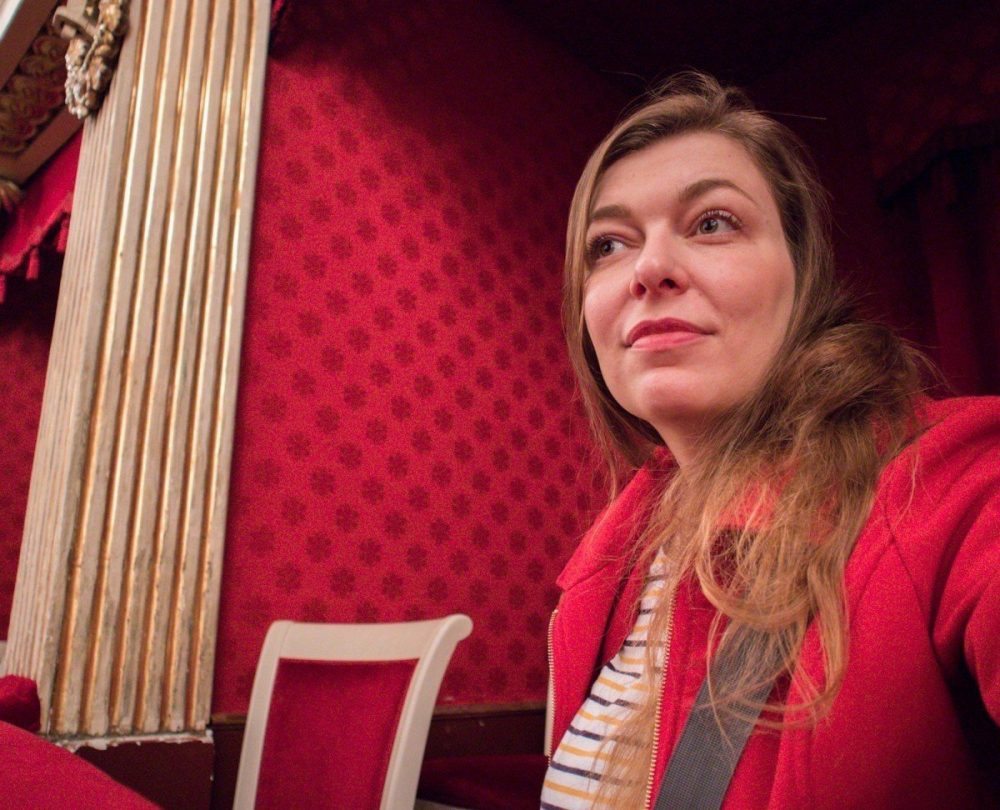
The structure and acoustics of the opera house
During a guided tour of the San Carlo Theatre in Naples, I discovered various architectural tricks that aimed to provide spectators with high-quality sound regardless of their seating position. One of these tricks is the horseshoe structure of the theatre. At the same time, the depth of the stage is simply an aesthetic matter to accommodate sets that give depth to the performances.
I also learned that Giuseppe Verdi introduced the orchestra pit, known as the ‘golfo mistico’, to the San Carlo Theatre. The orchestra pit is an elevatable platform that can reach the stage level for specific performances. The orchestra usually remains hidden from the audience’s eyes at a lower level than the stage during opera performances.
Opera houses are decorated with fabric almost everywhere to muffle outside sounds. The raised decorations, wooden floors, and velvet seats help to amplify the music upwards to the theatre’s wooden dome, which then bounces it off a canvas.
What appears to be a frescoed ceiling is a canvas strategically stretched to return the sounds of the musical notes and the singers’ voices down towards the spectators. Music lovers prefer to sit in the highest boxes, commonly known as ‘pigeonholes,’ because the sound is pure and clear in these places.
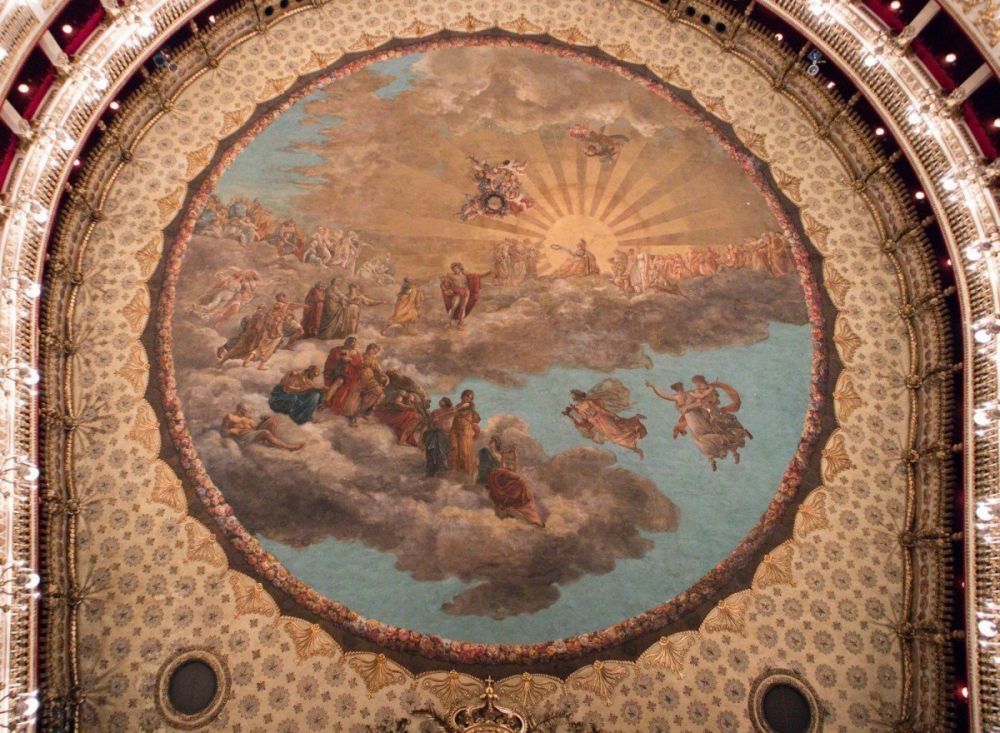
About the opera boxes
Booking seats for a theatre performance is now easier than ever, with almost all seats available, including those with reduced visibility that cost less. However, some boxes are so close to the stage, with poor stage visibility, that they are often left empty.
These boxes served just for composers to watch the musicians as the conductor figure emerged long after opera spread. Composers such as Rossini, Donizetti, Bellini, and Verdi would control the musicians from the side boxes.
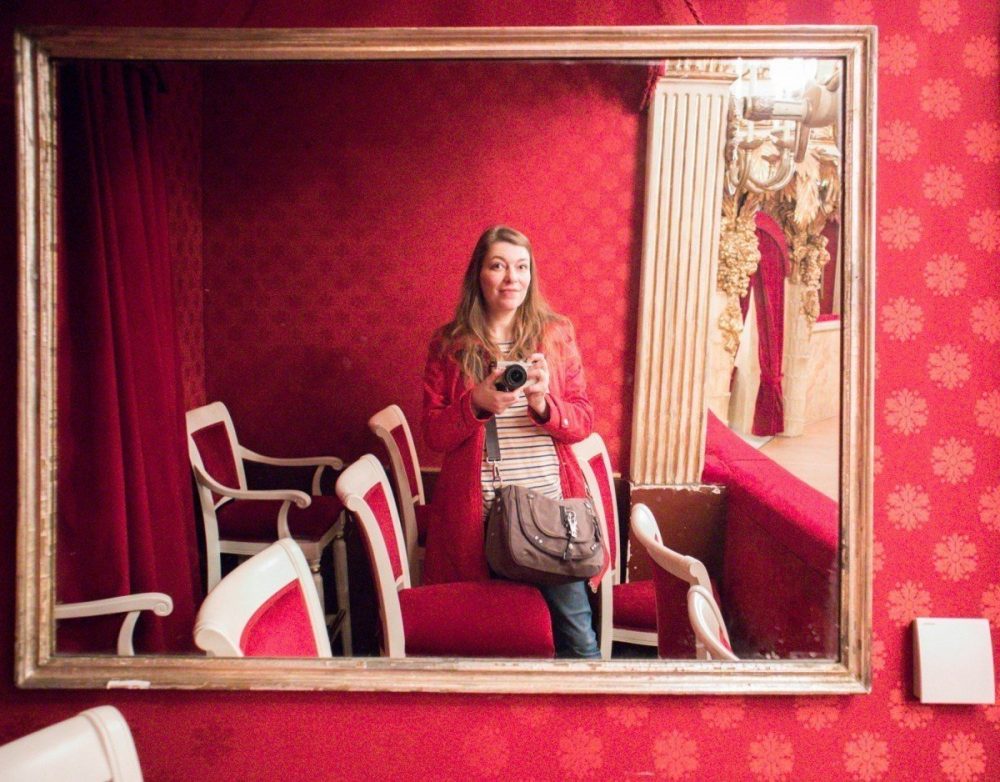
The spectators’ boxes were designed with a mirror to see when the king arrived. People also had to watch the king because if he did not like the performance, no one could applaud. The monarch also had a reserved entrance from an inner corridor that connected the royal box with the nearby Royal Palace.
The mirrors in the boxes also reflected the light of the candles inside the theatre. Before the advent of electricity, theatres were lit by candlelight, which posed the risk of fire.
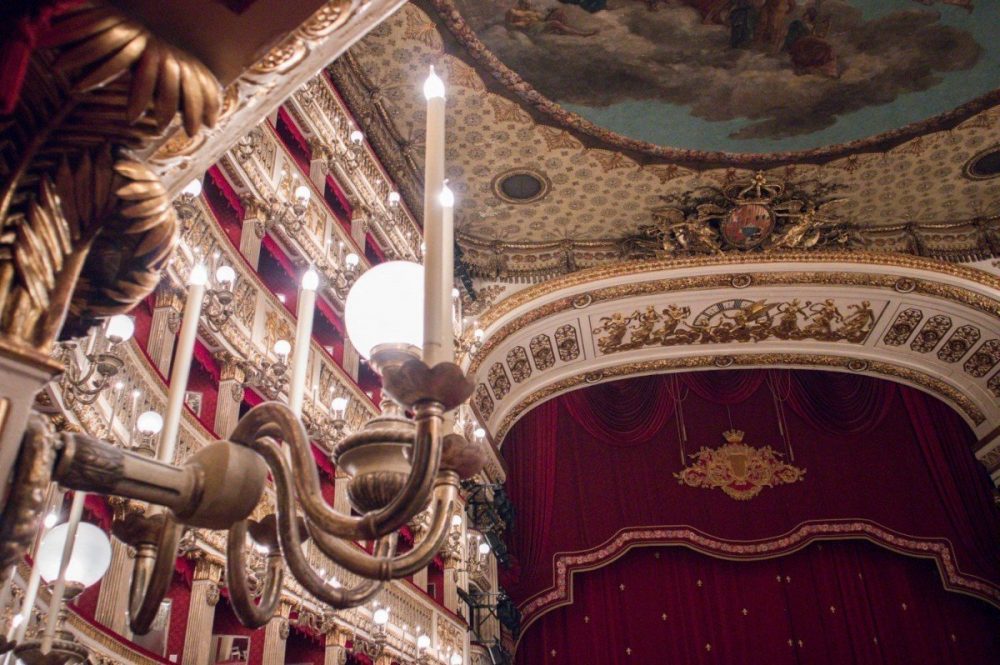
The Royal Coat of Arms
The San Carlo Theatre in Naples had a different decoration than other Italian theatres. Initially, its colours were blue and silver, the colours of the coat of arms of the Bourbon royal family. However, after the Unification of Italy, the decoration was changed to gold and red, matching the colours of the Savoy family. These colours had become a standard for theatres throughout the peninsula.
The coat of arms above the stage, which initially belonged to the Bourbons, was also repainted with the Savoy coat of arms. However, a plaster fell off the theatre ceiling after an earthquake, revealing the original Bourbon coat of arms. Today, you can still see the original coat of arms of the Bourbons above the stage.
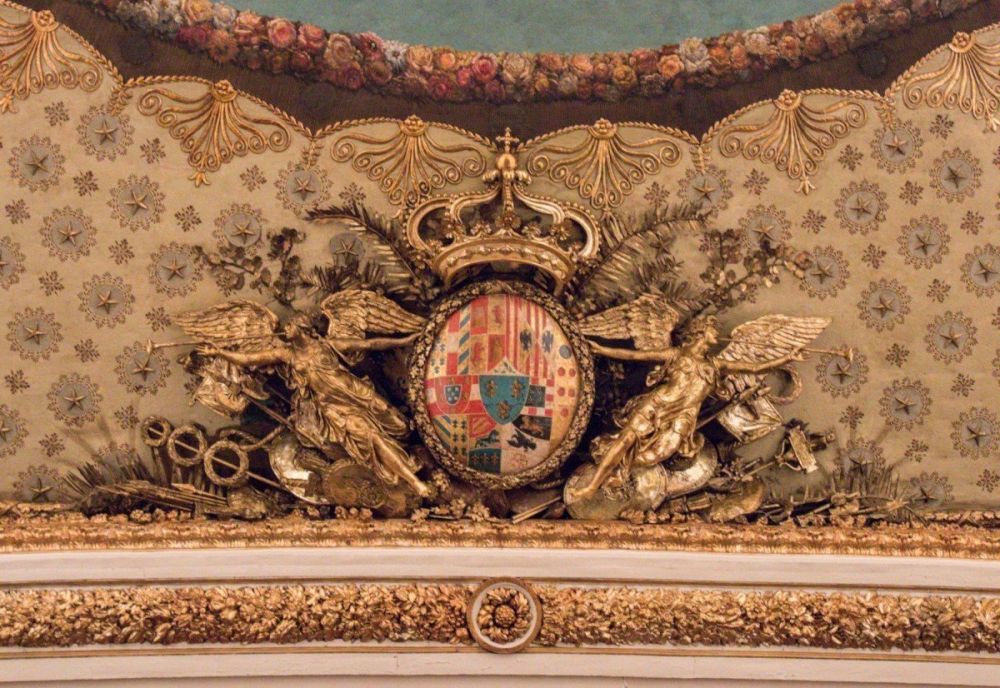
The clock of the San Carlo Theatre in Naples
The San Carlo Theatre in Naples has a unique clock above the stage. Instead of the hand, it is the dial that rotates. The figure’s right arm with wings remains still while the background moves. The clock depicts Cronos, the muses of art, and the siren Parthenope, symbolising timeless art. You can take all the time you need to enjoy the performance at the theatre.
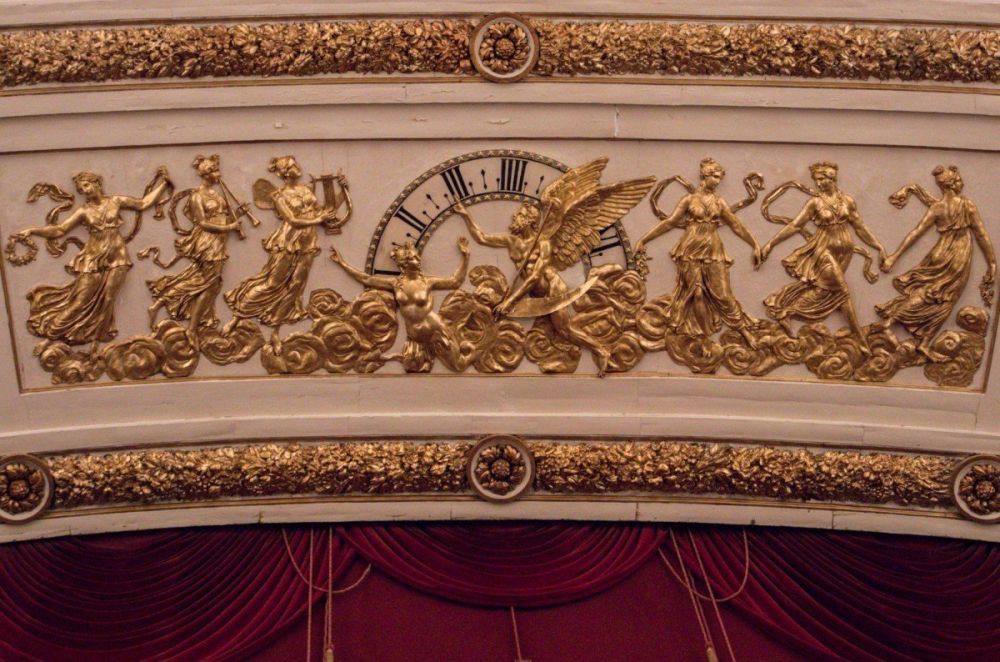
Practical information for visiting the San Carlo Theatre in Naples
The San Carlo Theatre in Naples is open to the public for performances and guided tours. Tours in Italian, English, and French are offered daily from 10:30 am to 5 pm. However, booking your tour in advance is best as they tend to fill up quickly. Unfortunately, you cannot purchase tickets for the tour online, so you’ll need to visit the theatre box office in person.
The guided tour costs €9, and you can also purchase a ticket to see the MeMus, the Museum of Memory and Music that preserves the historical archive of the San Carlo Theatre. Remember that the MeMus is more of a multifunctional space with a documentation centre than a traditional museum.
How to get to the San Carlo Theatre in Naples
The San Carlo Theatre is near the Royal Palace in the heart of Naples. You can easily access the theatre entrance and ticket office on foot if they are already in the city centre. Alternatively, the nearest stop is Municipio on Line 1 if you prefer to use the metro. In case you opt for a bus ride, you can take R2 or C25 buses that stop at San Carlo – Galleria Umberto I. The theatre is just a few minutes away from these stops on foot.
Teatro di San Carlo
Via San Carlo, 98
80132 Napoli
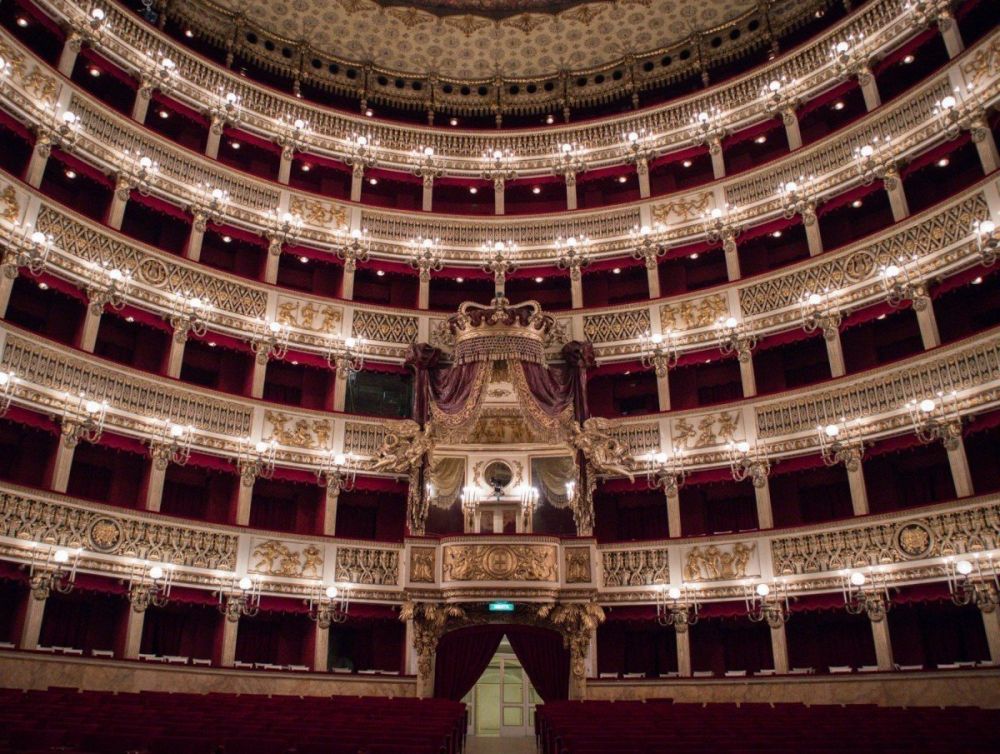
Where to stay in Naples
Naples boasts numerous accommodations, from hotels to seaside flats. With my frequent visits to Naples, I can suggest several options. For an authentic experience in the historic center, consider The Idyll Boutique Apartment in the Spanish Quarter. This charming flat features parquet floors and a fully equipped kitchen, conveniently close to major attractions. Alternatively, the upscale Relais Della Porta, situated on Via Toledo, places you a short distance from landmarks like the San Carlo Theatre. Last but not least, the Santa Chiara Boutique Hotel, located near the Dante metro stop, offers a continental or Italian breakfast to start your day.
The San Carlo Theatre is one of Naples’ most stunning tourist attractions. I highly recommend attending one of its performances during your stay in the city. Visiting an opera house, or even better, experiencing an opera, is an immersive experience that will transport you back in time. Feel free to share in the comments if you have seen the San Carlo Theatre in Naples as a tourist or spectator.
